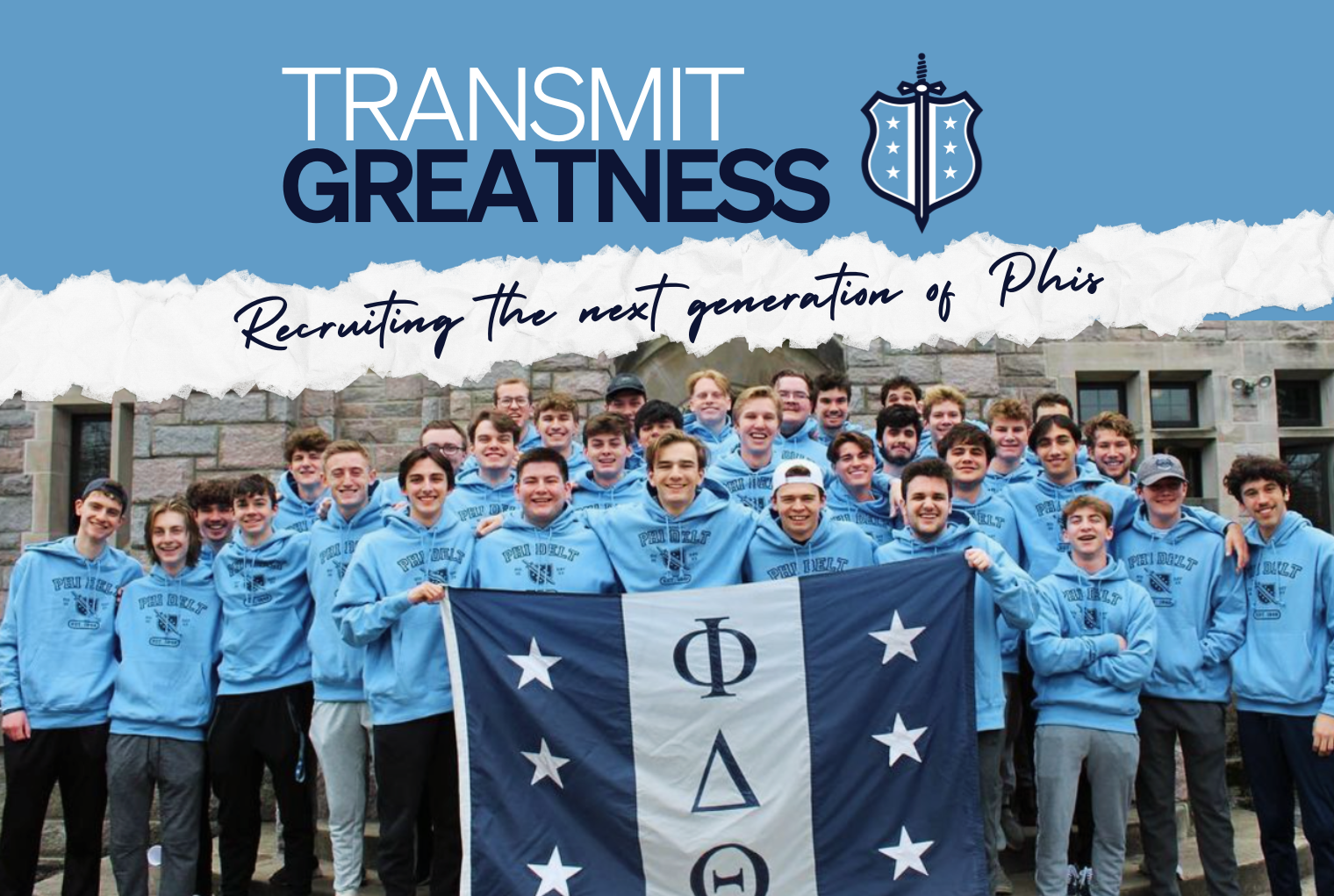By Steve Good, Vice President of Growth & Communications
I’ve always been intrigued by how things start, gain momentum, and ultimately become a success, movement, or trend. Whether it’s dissecting the factors that helped transform an entrepreneur’s idea into a successful business or simply watching a ridiculous video in disbelief after it has reached viral stardom, it sparks my curiosity.
This same curiosity led to some simple research over my lunch break the other day, seeking the answer to a very random question:
On average, how many Founding Fathers did a fraternity have when it was created? So for example, Phi Delt had six, and I grabbed the number of Founding Fathers from 10 other leading fraternities.
The Answer: The Immortal 6.25
With that number in my mind, I reflected on a conversation that I had with a colleague earlier that day. We were discussing the importance of the first five individuals who receive bids on the Fraternity’s expansion projects. Our projects take off immediately when a critical mass of recognized leaders is recruited. As unscientific as that number (5) was in that conversation, my lunchtime research project helped me convince myself that I kind of knew what I was talking about.
Later that afternoon, I received a report that showcased the number of new members that each of our chapters has recruited for the past four semesters. As I was reviewing the numbers, something stood out – In any given semester, there was a range of 15-23 chapters that didn’t recruit anybody.
I immediately made some assumptions about these chapters and many were confirmed:
- The chapter had a very successful recruitment period the semester before.
- The chapter is on a campus with deferred recruitment (freshmen can’t join until the second term) and it relies on freshmen as new members.
- The chapter has never recruited new members during that semester.
While the assumptions seemed to be true, I immediately realized how often they are used as excuses for not taking a new member class in a given semester.
I truly believe that to reach its greatest potential, a chapter needs to recruit at least six men every semester/term. Here’s my reasoning:
Setting up your Recruitment Chairman for success
If a recruitment chairman is in the role for a year, but only has one opportunity to execute, great pressure is placed on him. If he isn’t a good fit for the role or if he fails, it can set the chapter back two years. On the contrary, if the first half of a recruitment chairman’s tenure is building a smaller class, it gives him the opportunity to learn and make mistakes with less risk before the main recruitment period later in the year.
The same goes for your Phikeia Educator
If a Phikeia Educator has the opportunity to execute the Phikeia program on a smaller scale before a larger class is recruited later in the year, he has the opportunity to learn, adapt, and become better, therefore giving your new members a better experience.
Six seems to be the sweet spot
I’ve been around the fraternity block long enough to see how the size of any given class can affect the chapter’s morale and performance. In my experience, I’ve seen less excitement and engagement from brothers when classes are five or below. Going back to the Founding Father data, having at least six men in a given class seems to be the tipping point for future growth. Treat each semester like you’re building a Founding Father class. Obviously, your main recruitment semester should bring in many more than six men, but focus on getting to at least six in your off-season.
Off-season recruitment classes are great for finding top leaders on campus
So you’re on a campus where freshmen can’t join until the second semester. That’s ok. Recruit sophomores and juniors when freshmen aren’t available. They’re more seasoned, mature, and can instantly propel the chapter’s leadership capacity.
Competitive spirit
If I’m a new member and know that there was a class that came a semester before me and one that will be on my heels next semester, I’m going to immediately try to establish myself as a leader. This healthy competition will make everyone better.
Stable membership size
It goes without saying that having a class each semester safeguards the chapter from large dips in membership and leadership gaps. A 6+ man class in your off-season is a hedge against factors that you might not be able to control in your main recruitment season.
Creating a recruitment culture
If your chapter takes semesters off when it comes to recruitment, you’re signaling to your membership that finding good people is only important periodically. Finding good people is always important. Make it the norm, and challenge your newest class to lead the charge for the next class.
Approximately 75% of our chapters are already recruiting 6+ men each semester. This post is directed at the other 25% as a challenge to create that culture. I promise you that you will not be disappointed with the benefits that it brings to your chapter.





